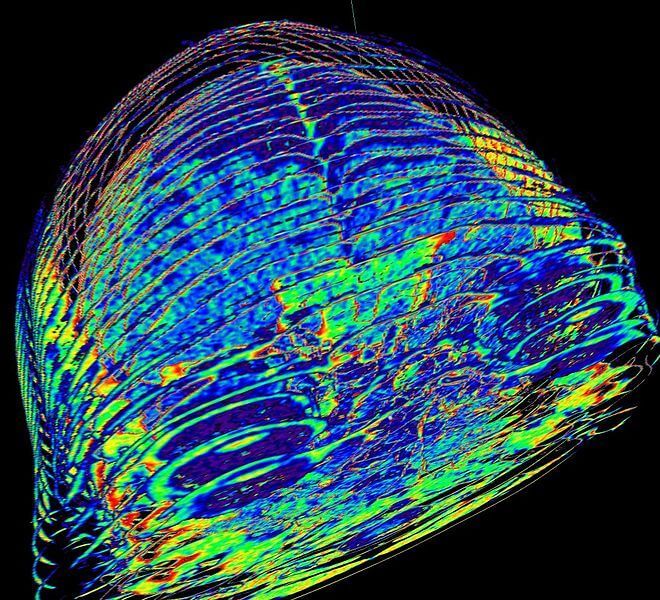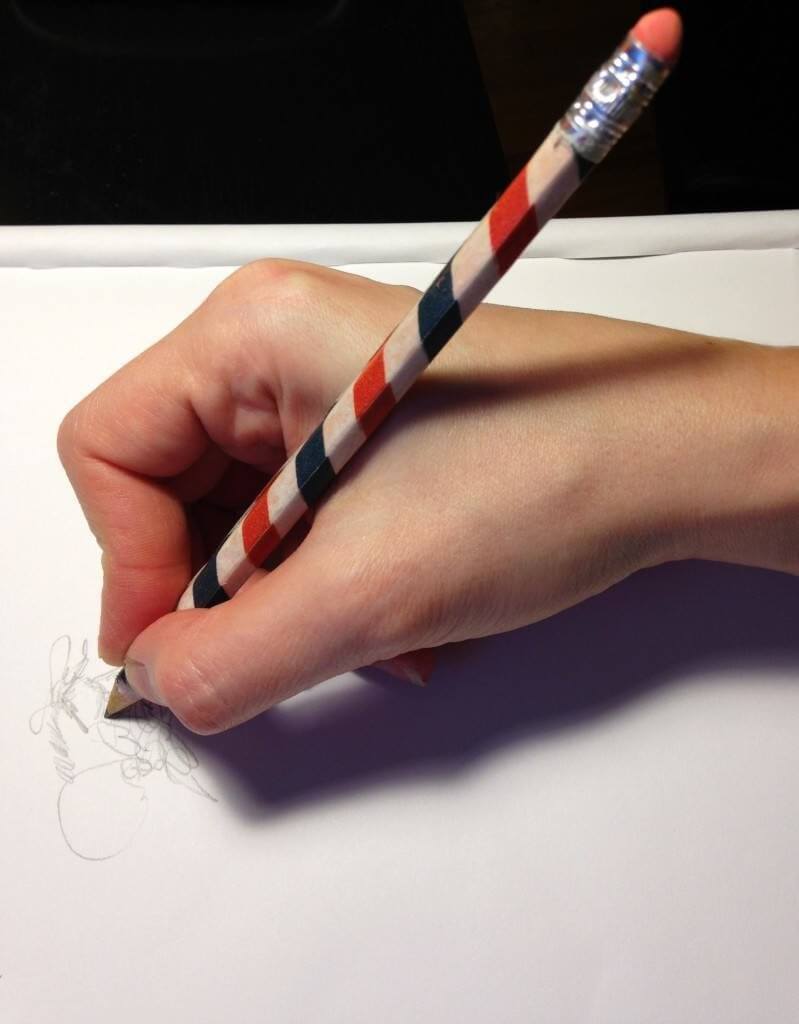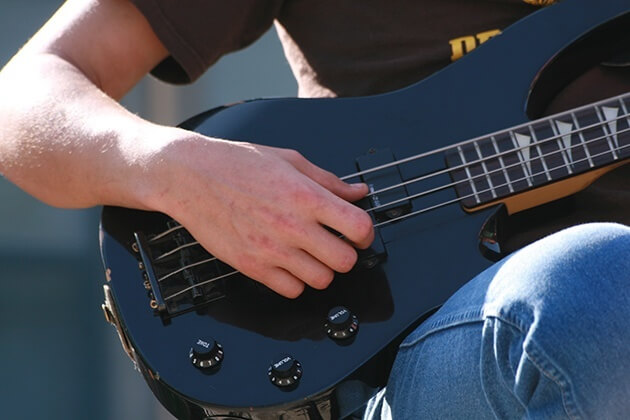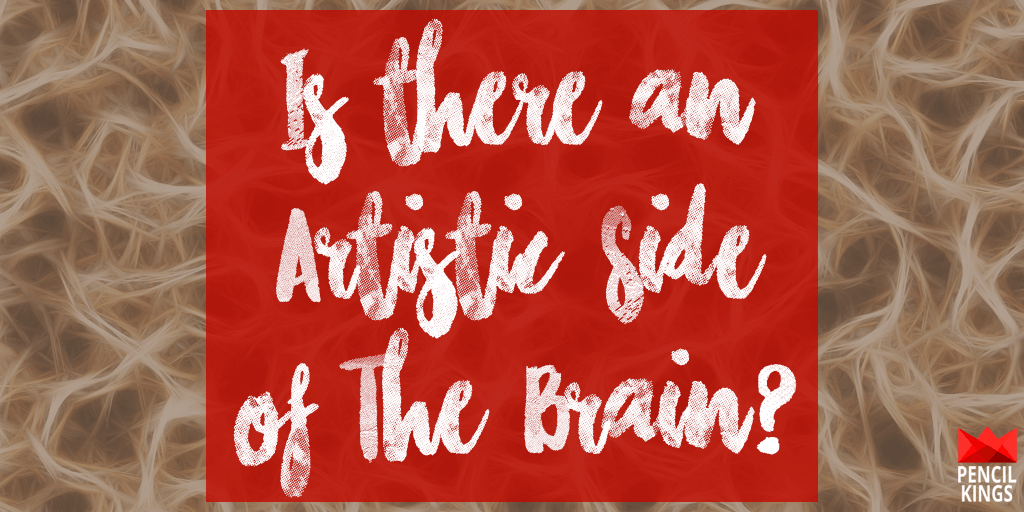
A brain scan. New scientific research suggests there
might really be an artistic side to the brain.
The artistic side of the brain has been a hot topic in art psychology for decades now, but is there any truth to this theory? Exciting new research carried out by scientists in Belgium suggests the answer could be even more interesting.
During the research, published last month in NeuroImage, scientists used a scanning process called voxel-based morphometry to compare the brains of 21 art students to those of non-creatives.
According to lead author, Rebecca Chamberlain, the results from each student’s artistic brain revealed evidence of increased neural matter in the parts of the brain concerned with fine motor movements and imagery.
However, she and her team also concluded that this fact alone isn’t enough to make someone truly think like an artist. They found that an individual’s training and environmental upbringing also play a huge role in determining their progress as an artist.
In other words, you may have a natural aptitude for art but the artistic side of the brain can only be developed through learning and having the opportunity to do so.
Drawing and Brain Development
Speaking to the BBC’s Inside Science program, Rebecca described how the people who were better at drawing appeared to have more developed structures in those regions of the brain that control fine motor performance.
She also highlighted another area where the art students’ brains were different, in that the regions for ‘procedural memory’ were more developed than in their non-artistic counterparts.
What is procedural memory and how does this relate to an artistic side of the brain? It’s memory allocated by your brain for performing particular actions, such as tying the laces in your sneakers or reading a book. You don’t even have to think about it – you just do it on autopilot.
Interestingly, procedural memory resides just below the level of conscious awareness. It’s developed through procedural learning, where a complex action is repeated again and again until the neural systems in question all work together to produce the activity automatically.
Doesn’t this sound a little like painting or drawing?

Drawing exercises are often used by scientists to test for procedural memory
Procedural Memory And The Artistic Brain
One of the methods used by scientists to test for procedural memory is called the mirror-tracing task. During this activity, you’re asked to trace a diagram of a star (or another simple form) with a pencil using only the reflection of your hand in a mirror as your guide.
This test has produced evidence of procedural memory because even people with amnesia have been able to learn and retain the task.
The brain scans conducted on the art students also revealed they had substantially more gray matter in a region of the brain known as the precuneus, located in the parietal lobe.
According to Rebecca, this is important because it shows the young artists have more developed brains for visual imagery tasks such as manipulating, combining and deconstructing images in your head. Sounds a lot like the creative process, don’t you think?
Another test carried out during this research was a series of drawing tasks, which scientists used to examine the relationship between creativity and gray and white matter in the brain.
Why Artists Have More Gray Matter in Their Brains
According to the results, those who were better at drawing had a larger amount of gray and white matter in the cerebellum and supplementary motor area – both hugely important for fine motor control and carrying out routine, procedural memory actions.
What’s the difference between gray and white matter in the brain? Could there really be an artistic side of the brain? Gray matter is mainly composed of nerve cells, while the white matter is there to enable communication between the areas of gray matter.
According to the results of this research, artists and other creatives seem to have enhanced processing capabilities in this part of the brain.
However, because the human brain is so responsive and adaptable to training, it’s difficult to determine just how much artistic ability is innate (meaning you’re born with it) and how much can be acquired through learning.
Why The ‘Drawing On The Right Side Of The Brain’ Theory is Probably Wrong
Although Rebecca and her team would be keen to carry out this exciting research using a larger number of participants (and therefore discover more about what their findings really mean), there’s one theory that’s been completely disproved by their tests.
For years, people have been excited by the theory that creatives use the right side of their brains when making art and so there really could be an artistic side of the brain.
However, since the all-important gray matter was found in both the left and the right sides of the art students’ brains, it seems it’s time to put this particular art psychology theory to bed.

Research suggests musicians have 130% more gray matter in their brains than people who aren’t musical
Why Musicians Also Score
Highly For Gray Matter
It’s not just visual artists who score highly for gray matter. A study carried out by scientists at the University of Heidelberg, Germany, in 2002 revealed musicians have approximately 130% more gray matter in the part of your brain which processes music compared to non-musical people.
The study also revealed that we use different parts of the brain to listen to music. The left side is the main area for rhythm and pitch, while the right deals with timbre and melody.
Next time you’re rockin’ out to your favorite tune, why not try thinking about which parts of your brain are working to make sense of all the sounds you hear? If you like listening to EDM, we’re guessing it’ll be the left side of your brain which is loving the beats most.
Is Being an Artist in Your Genes?
Another interesting fact revealed by this study was that the amount of gray matter is fixed at birth, leading scientists to believe genetics probably play a huge role in determining just how creative someone is. However, as with visual artists, genes are only part of the story.
It’s the learning and development that happens as you grow up that really determines whether you’re going to excel as an artist or not.
Interestingly, this research also revealed that an individual’s potential as a musician is only set in stone until the age of nine. After that, learning and continuous practice are what really make the difference.
Perhaps this could explain why so many ‘child prodigies’ don’t grow up to become world-famous artists and musicians. It seems it’s one thing to be born with natural ability, but quite another to take this and turn it into an exceptional skill.
In the end, no matter how much gray matter you have, the best way to improve as an artist is to get into a set routine, work hard, find your most creative times and keep creating – so have fun exploring the artistic side of your brain.
